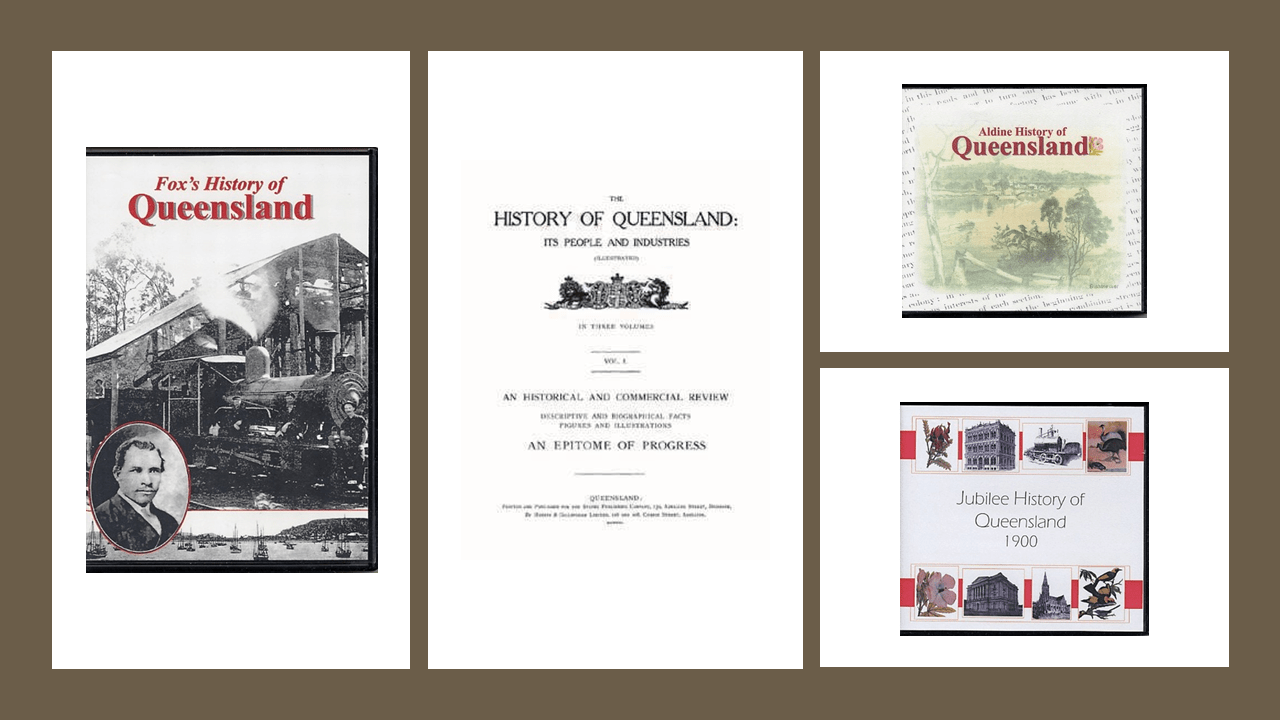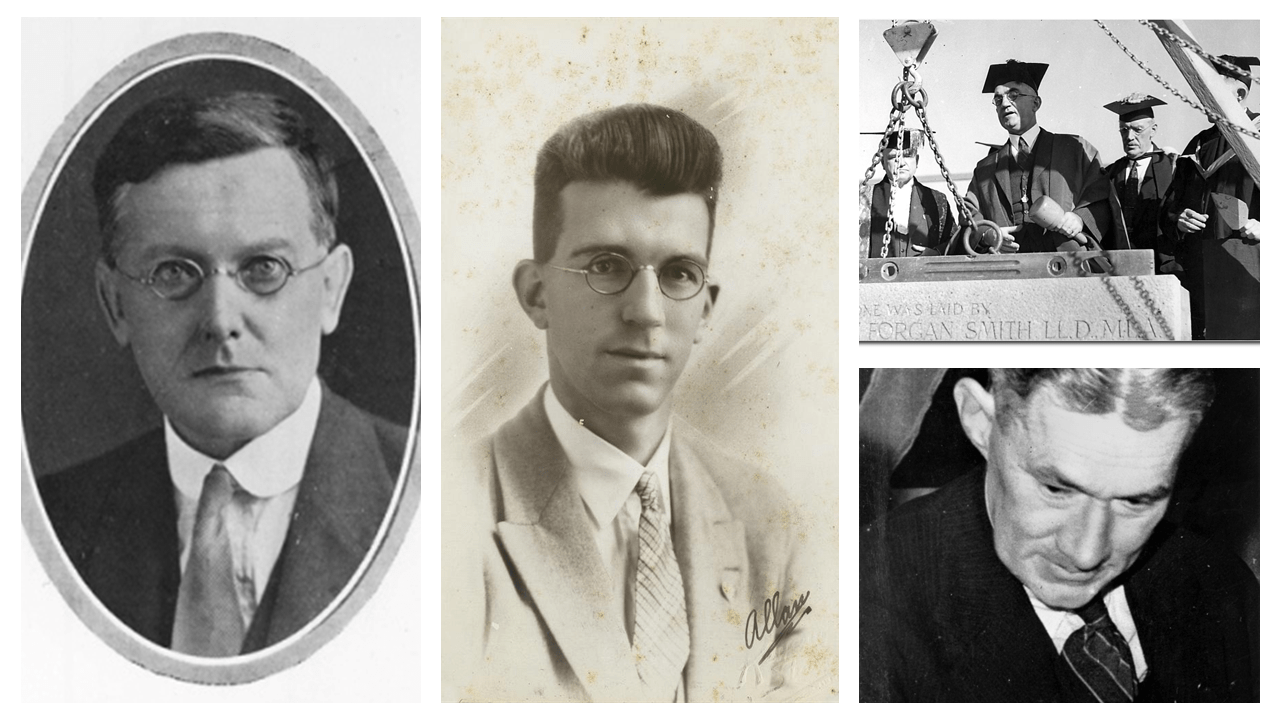What did the University of Queensland teach under the different disguises of ‘History’ before 1949?
It began as British History, Constitutional History, and Economics. First, British history was the one lecture course in 1911-1913, with two lecture sets, “The Anglo-Saxon Period” and “The Transition from Norman Despotism to the Medieval Parliamentary Monarchy.” It was not ‘British History’, as such, but a post-Union interpretation of the ‘British’ Isles. Added to this first course offering was “Special Studies of the Reformation and the Puritan Revolution as far as the outbreak of the [English] Civil War.” The first year of teaching, thus, was actually ‘Medieval and Early Modern’ histories, with a stubbornness of the British framework. Australian history was in the distant future, and there was a great pretense of global, empirical, neutrality in regards to the teaching of world history. The second year (1912) brought economic history and economics into the picture, in an oddly skewed way, which intellectually was a policy to teach history and economics via conservative doctrines. The fourth history unit in 1912 was the lecture set on “William Pitt and the French Revolution.” Thus added in the 1912-1913 teaching cycle were lecture subjects of ‘Economics’, ‘Money and Banking’, and ‘Constitutional History’. The latter signalled how ‘history’ would be reduced as a handmaiden to the Faculty of Law; however, that was to come in the years ahead.
In 1912 the first Honours course was designed. Honours students were expected to do Ancient History. As the Honours program developed, the Classics subjects requirements modulated. They were dropped circa 1917, but Ancient History, as a half course, was made a requirement for third year in 1920. Circa 1927, the third-year requirement changed for student to complete the course in “Greek Literature, Philosophy, and Art.” In 1913 a series of subjects were added to the curriculum under the ‘British History’ units of learning: “Part 1. Tutor and Stuart Periods,” “The Puritan Revolution,” and “The Revolution of 1688 and the Whig Settlement.” The latter was designated as a subject in the unit of “British History (Modern)” and the new subjects signalled a step beyond the conservative framework into British liberalism. The economic and constitutional subjects were also seen as the ‘modern’ version of British History. The Unit of Constitutional History also added two new subjects in 1913: “Development of Parliamentary Sovereignty” and “Party and Cabinet Government.” The Economics Unit introduced “Systematic Economics,” “Economic History”, and a “Economics Short Course” designed as a boutique area for students in other faculties and degrees.
The Systematic Economics and Economic History and only lasted in that format until 1922, but the short course continued until 1934. In 1924 the Economics Unit was redesigned, and was taught until 1934. In the handbook, unlike the other ‘history’ courses, there were not subject titles, only subjects descriptions in two parts with three sub-parts each:
Part 1. Three sub-parts:
(a) General Survey of Economic Theory;
(b) Economic History;
(c) Economic Geography.
Part 2. Three sub-parts (Evening Only):
(a) Advanced Economic Theory;
(b) Practical Economic Investigations;
(c) Tutorially conducted visits to Commercial and Industrial Establishments, on which Essay Work will be based.
A new Unit, Political Science, was added in 1917, and Constitutional History integrated into this singular set of lectures until 1920. In that year the “Constitutional History and Political Science” Unit was reformulated. It was designed similar to the Economics course format, but doubling the Parts 1 and 2 (no subject titles, only lecture sets):
Part 1. Three sub-parts:
(a) The Constitutional History of England up to about 1701;
(b) General Principles of Constitutional Development, as illustrated by (a);
(c) Groundwork of Constitutional Law, as illustrated by (a).
Part 1. Three sub-parts:
(a) General History of Political Thought up to about 1701;
(b) The General Theory of the State;
(c) The Relation of (a) and (b) to Selected Political and Constitutional Developments of Outstanding Importance.
Part 2. Three sub-parts:
(a) The Constitutional History of Great Britain and Ireland and the British Empire from 1701;
(b) Detailed treatment of a Portion of (a) to be described by the lecturer;
(c) Comparison of Constitutional Law in Various Countries;
(d) Groundwork of Constitutional Law, as illustrated by (a), (b) and (c).
Part 2. Three sub-parts:
(a) General History of Political Thought from about 1701;
(b) Detailed Examination of some Modern Political Philosophies;
(c) Constructive Application of Principles derived from (a) and (b).
This format continued until 1926. Associated with the last part was two Special Topics. The first began in 1930 on the subject of ‘Thomas Hobbes’ and appeared in 1928 and 1936-1941. The second subject was ‘The Utilitarians,’ a Special Topic for 1930 and 1936-7, and 1939. In 1942 the special studies utilitarian theme became part of ‘Constitutional History and Political Science Part 2’ (as its own separate unit).
British History was revised in 1921, along the similar four-part design:
Part 1. English History to 1701
Part 1. Colonial History to 1910 [and then ‘to 1925’ in the retitle of 1926]
Part 2. English History, chiefly between 1701-1859
Part 2. General European History 1815-1914
In 1926 “English Economic History to 1800” was added to the British History Unit.
A ‘Modern History’ stream was created in 1928 and was taught from existing subjects until 1934. In the following two years the Honours program was redeveloped. A Special Subject for 1929 was created: “The Crusades,” and a Special Subject for 1930: “The Influences of Economic Conditions upon American Constitutional History since 1760.” In 1929 the Honours School of Economics was created.
With the rebranding as the ‘Social Studies’ school in 1935, the British History Unit simply became known as ‘History’. Following the same four-part format, the curriculum was now:
Part 1. General History, Medieval, and Early Modern [from 1935 and alternate years]
Part 1. English History, Medieval, and Early Modern to c. 1800 [from 1936 and alternate years]
Part 2. Imperial History [from 1935 and alternate years]
Part 2. Modern International Relations [from 1936 and alternate years]
In the same year the “Constitutional History and Political Science” Unit was slightly changed, with a few rewordings of titles and a swapping around of a few sub-parts:
Part 1. Three sub-parts:
(a) British Constitutional History;
(b) General Principles of Constitutional Development, as illustrated by (a);
(c) Groundwork of Constitutional Law, as illustrated by (a).
Part 1. Three sub-parts:
(a) General History of Political Thought up to about 1701;
(b) The General Theory of the State;
(c) The Relation of (a) and (b) to Selected Political and Constitutional Developments of Outstanding Importance.
Part 2. Three sub-parts:
(a) Constitutional Development in the British Colonies;
(b) Foreign Constitutional History
(c) Groundwork of Constitutional Law, as Illustrated by (a) and (b).
Part 2. Three sub-parts:
(a) General History of Political Thought from about 1701;
(b) Detailed Examination of some Modern Political Philosophies;
(c) Constructive Application of Principles derived from (a) and (b).”
This design lasted until 1941, when in 1942 the main parts became their own units in the ‘Social Studies’ school.
A major restructure of the Economics Unit occurred in 1935. Economic History became its own separate unit with a small and singular lecture set. The Economics Unit went back to teaching “A General Survey of Economic Theory,” added to this was the “Australian Banking and Currency” subject which continued largely as part of the General Survey unit. The short course continued and there were two ‘Part 2. Economics’ evening classes (the handbook provided no further details). In 1939 the Economic History Unit was redesigned and taught until 1947, with three subjects:
Economic History of Europe (including England, especially the rise of capitalism)
Economic History of Australia
Economic Interpretation of History
The Year 1939 was also important turning point for another reason. The first ‘Asian studies’ was introduced, in the form of the ‘History of Japanese Civilisation’. Its three subjects were:
The Early Imperialism
The Feudal Age
The Post-Restoration Period
In 1948, in the now ‘History’ school’, Constitutional History and Political Science Part 1 and Part 2 became their own separate units. Little changed, though, as the lecture sets. Only re-wording and other slight changes:
Part 1. Three sub-parts:
(a) British Constitutional History;
(b) General Principles of Constitutional Development, as illustrated by (a);
(c) Groundwork of Constitutional Law, as illustrated by (a).”
Part 1. Three sub-parts:
(a) The Development of Political Thought in Britain;
(b) The General Theory of Democracy;
(c) Illustrations of the Theory of Democracy from the Institutions of the British Commonwealth.
Part 2. Three sub-parts:
(a) Constitutional Development in the British Colonies;
(b) Foreign Constitutional History
(c) Groundwork of Constitutional Law, as Illustrated by (a) and (b).
Part 2. Three sub-parts:
(a) General Theory of the State;
(b) Examination of some contemporary political doctrines;
(c) Illustrations of (a) and (b) from the institutions of the countries of the American, European, and Asiatic continents.
The special studies utilitarian theme became part of Constitutional History and Political Science Part 2, on alternate years. The re-wording of terms is important, providing information on the emphasis and focus on the curriculum. This is the first reference to the “British Commonwealth” as a school subject.
In 1948 Political Science I and II became new units, as did Constitutional History I. Political Science was taught as two special studies and Constitutional History were two general subjects. There is no further information in the handbook of 1948, however, with arrival of the new Professor of History, Gordon Greenwood, the following year, the curriculum was about to go in new directions – reviving ‘international relations’ as a school theme.
Image: The earliest Queensland History publications.
Image: Left to Right, Professor Henry Alcock, A.A.(Allan Arthur) Morrison, Laying down of the Forgan Smith Building Foundation Stone, Associate Professor A.C.V. (Alexander Clifford Vernon) Melbourne.
Neville Buch
Latest posts by Neville Buch (see all)
- J. D. Vance’s Insult to America is to Propagandize American Modernism - July 26, 2024
- Why both the two majority Australian political parties get it wrong, and why Australia is following the United States into ‘Higher Education’ idiocy - July 23, 2024
- Populist Nationalism Will Not Deliver; We have been Here Before, many times… - July 20, 2024



